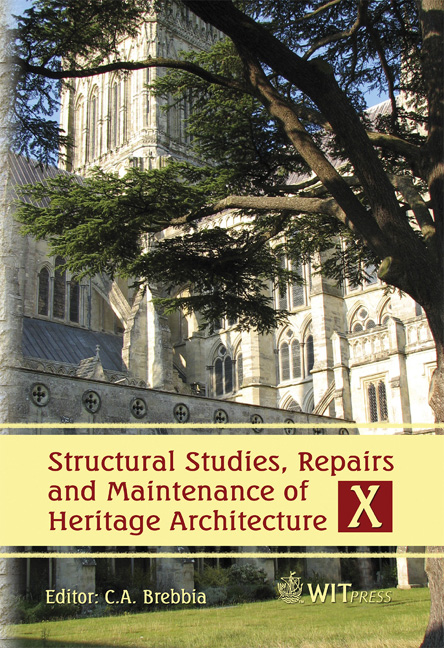Non-destructive Testing Techniques Applied To The Masonry And Timber Structures Of The Crocifisso Church In Noto
Price
Free (open access)
Transaction
Volume
95
Pages
12
Published
2007
Size
3,521 kb
Paper DOI
10.2495/STR070221
Copyright
WIT Press
Author(s)
L. Binda, L. Cantini, P. Condoleo & A. Saisi
Abstract
After the partial collapse of the Cathedral of Noto in Sicily, damaged by the 1990 earthquake, which hit the oriental part of the Italian island, an extensive investigation carried out on site and in the laboratory allowed the detection of a pre-existing damage of the pillars due to long term behaviour of the material under compressive stresses. The investigation extended to other churches and buildings showed cases of progressive damage, which can in an unknown time, bring the structures to sudden collapse. This paper presents and discusses the preliminary results of the research carried out by the authors on the Crocifisso Church in Noto, built in the same period and with material similar to that of the Cathedral. The investigation programme was planned, aimed at evaluating the state of damage of the structure and at designing the preservation and restoration actions. Keywords: diagnosis, on site test, long-term behaviour. 1 Introduction The dramatic collapse of the central nave and of part of the dome of the Noto Cathedral (Fig. 1) damaged by the 1990 earthquake, took place only six years later, in 1996 (De Benedictis et al [1]). The accurate on site and laboratory investigation confirmed that the earthquake was only worsening the situation of the materials and of the structure which was already highly damaged (Binda et al [2, 3]). The removal of the plaster (which was made in the 1960s) from the remaining pillars of the central nave revealed the pre-existence of a diffused distribution of vertical cracks and spalling of the corners in the external leaf made with limestone (calcarenite) regular blocks (Fig. 2). In fact, these cracks
Keywords
diagnosis, on site test, long-term behaviour.




